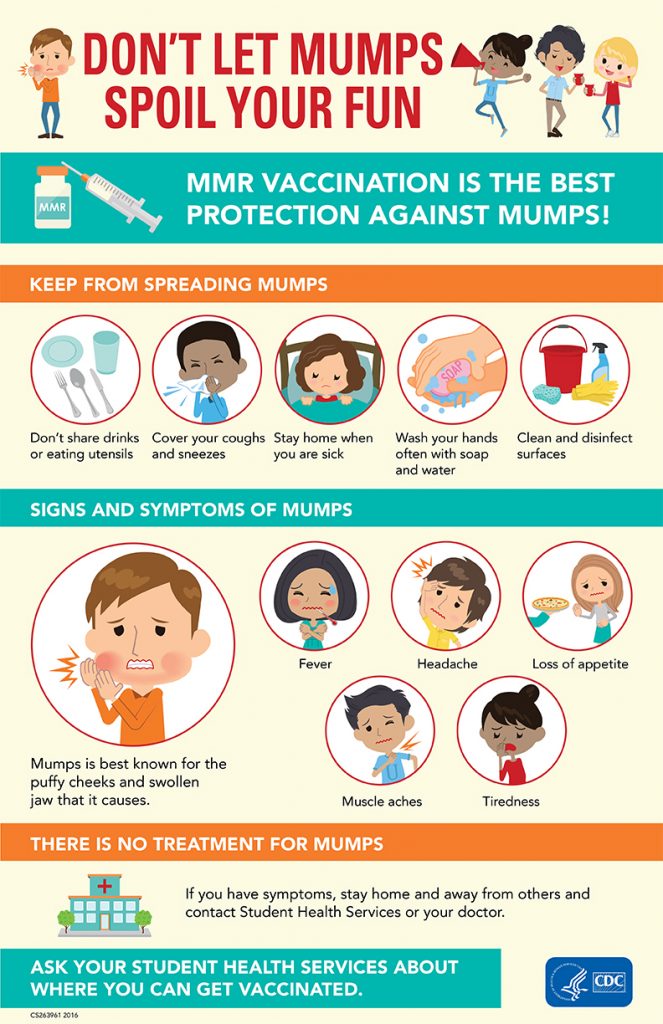Auckland
Auckland, New Zealand is seeing the most mumps cases in a single year in more than two decades. According to the Auckland Regional Public Health Service (ARPHS), 311 confirmed and probable cases have been reported this year.

In 1994, at least 200 cases were reported; however, since then only a handful of cases were reported annually.
Low vaccination rates are fueling Auckland’s mumps outbreak. “The majority of cases are aged 10 to 29 years as this age group has had lower than average immunization rates,“ says Clinical Director, Dr Julia Peters. Around 80 percent of the current cases were not fully vaccinated.
“Most people recover from mumps however some individuals can develop rare complications which we have already seen this year”. Mumps-related meningitis, testes inflammation and cases of hospitalization have been reported.
Japan
A survey by the Oto-Rhino-Laryngological Society of Japan revealed that at least 336 people suffered hearing loss in Japan in 2015 and 2016 as a result of complications related to the contraction of mumps.
A total of 261 people diagnosed with severe hearing loss to such an extent that it causes difficulties in their daily lives. Of sufferers, 154 were aged between 5 and 10 years old. Fourteen patients developed hearing difficulties in both ears and 11 began wearing hearing aids or had a cochlear device implanted.
The survey drew responses from 3,536 medical institutions across the country.
LISTEN: Mumps: Why it’s seen a resurgence
Mumps is a highly contagious respiratory disease that is spread through indirect or direct contact with an infected person’s nose or throat droplets, such as when an infected person coughs or sneezes. It is best known for the puffy cheeks and swollen jaw that it causes because of inflammation of the salivary glands under the ears on one or both sides. Other common symptoms include fever, headache, muscle aches, fatigue and loss of appetite. Some people who get mumps have very mild or no symptoms, and often they do not know they have the disease.
Most people with mumps recover completely in a few weeks. However, mumps can occasionally cause severe complications, especially in adults. Treatment includes rest, fluids, and over-the-counter medicine to reduce fever and discomfort. Since mumps is caused by a virus, antibiotics are not used as a treatment.
People with mumps can spread the infection for up to two days before, and five days after, symptoms develop, so those infected can spread the disease before they feel sick. Symptoms typically appear 16 to 18 days after infection, but this period can range from 12 to 25 days after infection.
The best prevention against mumps is vaccination. The MMR vaccine is safe and effective. According to the CDC, two doses of mumps vaccine are 88% (range 66% to 95%) effective at preventing the disease; one dose is 78% range (49% to 91%) effective.
See New York from the water and enjoy up to 46% off cruises!
In addition to vaccination, other preventive measures that can be taken to prevent the disease include: Do not share food, drinks, utensils or other personal items that may contain saliva; wash your hands frequently with soap and water, or use an alcohol-based hand rub if soap and water are not available; cover your nose and mouth with a tissue if you sneeze or cough, and discard the tissue after you use it. If a tissue is not available, sneeze or cough into your upper sleeve or elbow, not your hands; clean and disinfect objects and surfaces that may be contaminated with germs and people with the mumps should stay home, and away from public places for five days after the onset of symptoms and limit contact with others in their household.
Related:
- Mississippi West Nile virus case count higher than 2016
- Lassa fever: UTMB researchers develop treatment effective eight days after infection
- Hepatitis A cases in Sydney prompts investigation
- California: Lancaster fruit vendor with hepatitis A prompts warning
- Kingella carriage in children’s throats strongly linked to bone and joint infection: Study
- Chicago suburb reports sightings of ‘Zombie dogs’ which are actually coyotes with mange
- Japanese encephalitis, the Philippines and the need to put the vaccine on the national schedule




One thought on “Mumps news: Auckland reports most cases in 20 years, Japan reports hundreds suffering hearing loss”